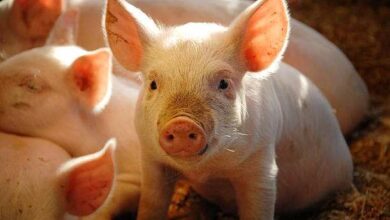A Complete Guide to Different Types of Bees and Their Roles
The Complete Guide to Types, Varieties and Characteristics of the Amazing World of Bees
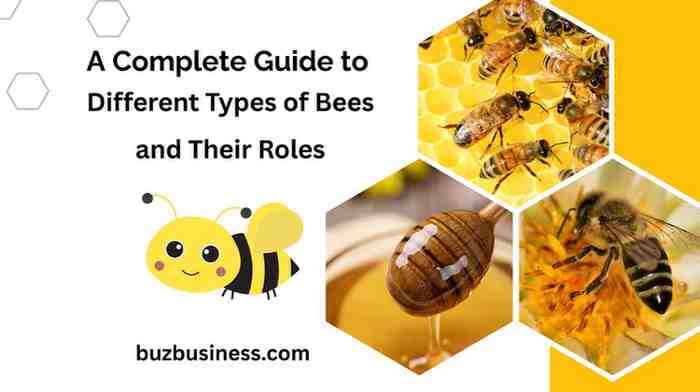
One of the most important insects on earth is the bee. These tiny creatures are responsible for pollination and honey production. Many bees species important for agriculture and biodiversity are found in India.
These insects fascinate both scientists and environmentalists, from the busy honey bees in our gardens to the giant rock bees in the Western Ghats. Knowing the different kinds of bees helps us to protect and appreciate them.
Why Bees Matter to India
The bee is vital to India’s agricultural economy. Each year, these pollinators contribute to the production of crops, fruits, and vegetables valued at billions of rupees. Many of our favorite foods would vanish from our plates if bees didn’t exist.
Indian farmers and bees have a long history dating back thousands of years. Beekeeping and honey gathering are mentioned in ancient scriptures such as the Vedas. Across the nation, contemporary apiculture now sustains rural livelihoods.
Major Types of Bees Found Worldwide
Worldwide, scientists have discovered more than 20,000 different species of bees. Except for Antarctica, all continents are home to these amazing insects. Bees are so diverse that scientists are constantly finding new species to be amazed.
Wasps gave rise to bees millions of years ago. They developed special features to collect pollen and nectar from flowers. This is how we have the amazing bees we see today.
Different types of bees have adapted to their environments. Desert bees can handle heat, mountain bees can handle cold and some bees specialise in pollinating specific flowers and have a unique partnership with the plants.
Understanding how scientists classify bees helps us appreciate their diversity. Bees are in the order Hymenoptera which includes wasps and ants. Within this order, bees are in the superfamily Apoidea. This classification system breaks down the vast world of bees into manageable chunks.
The three main types of bees are based on their social behaviour. These categories help us understand how different bees live and work. Each category has thousands of species with different characteristics.
Social Bees
Social bees live in big colonies with a queen, workers and drones. They work together to build hives, gather food and raise young. Honey bees are the most well known social bees.
The colony structure of social bee is very organized. Each bee has a job. Some guard the hive, others gather nectar, and nurse bees care for the larvae.
Solitary Bees
Social bees live alone. Each female builds her own nest and lays eggs without help from other bees. These bees make up about 90% of all bee species.
Solitary bees include leafcutter bees, mason bees and carpenter bees. They don’t produce honey but are great pollinators. Many farmers now encourage solitary bees in their fields.
Semi-social Bees
Some bees fall between social and solitary. These semi-social bees may share nests or work together temporarily. Bumblebees are good examples of semi-social bees.
Common Bee Varieties in India
India has a lot of bees. From the Himalayas to the coast, different bees thrive in different climates. The subcontinent has native and introduced species that have adapted to the local conditions.
India has a rich floral diversity and food for many bees. Bee populations vary by region and are tailored to the local environment and flowers. The snowy mountains of Ladakh are not as suitable for bee life as Kerala’s tropical climate.
According to traditional Indian knowledge, there are several species of bees. Depending on their size, temperament, and nesting habits, bees in rural locations have been given names. This native classification often proves to be amazingly accurate when compared to scientific taxonomy.
According to recent studies, India is home to around 700 different kinds of bees. However, the public is only familiar with a small number of species. These well-known bees are essential to the nation’s agriculture and honey production.
The most economically important bees in India are both native and managed. These bees contribute billions to the economy through pollination services and hive products. Knowing these common ones helps farmers and beekeepers work with bees.
Conservation efforts are focused on saving native Indian bee varieties. These local bees are threatened by habitat loss and competition from introduced species. Saving bee diversity means resilient ecosystems and sustainable agriculture.
Indian Honey Bee (Apis cerana indica)
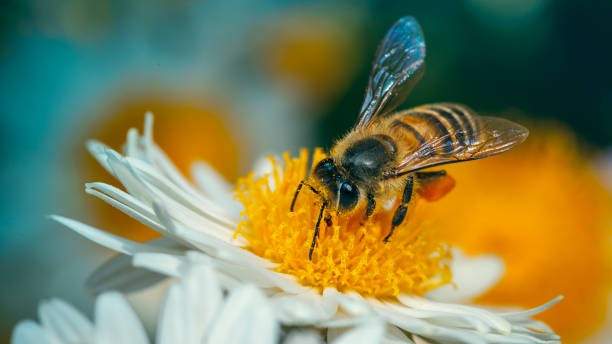
Indian honey bee is native to the subcontinent. They are smaller than European honey bees but better suited to our climate. They are disease resistant and monsoon proof.
Indian honey bees produce less honey than foreign varieties. But their honey has unique flavors based on local flowers. Many traditional beekeepers prefer these native bees.
(Apis dorsata) Rock Bee
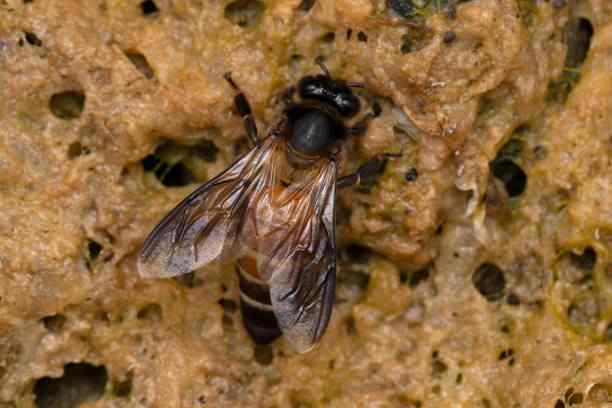
In India, rock bees are the largest species of bees. On cliff faces or tree branches, they create lone, massive combs. Tribal people gather the renowned wild honey produced by these hostile bees.
Rock bee honey collection calls for bravery and ability. Smoke and age-old methods that have been handed down through the years are used by honey seekers. Rock bee honey is highly valued for its therapeutic qualities.
Little Bee (Apis florea)
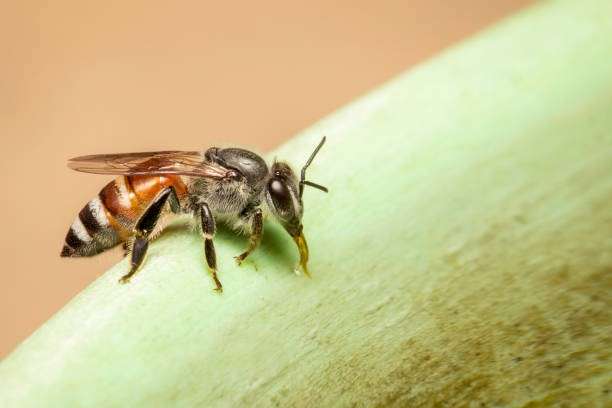
Little bees are the smallest honey bees in India. They build tiny combs on bushes and small trees. Despite their size, these bees are important pollinators for small plants and herbs.
These bees are gentle and rarely sting. Their honey yield is low but the quality is excellent. Little bees often visit home gardens and urban areas.
Stingless Bees (Tetragonula species)
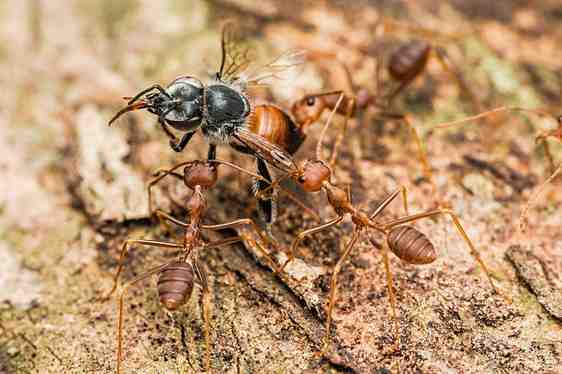
Stingless bees are unique among Indian bees. As their name suggests they cannot sting. These tiny bees produce small amounts of highly medicinal honey called “dammer honey”.
Traditional healers value stingless bee honey for treating eye problems and wounds. These bees are easy to keep in wooden boxes or clay pots. Many households in Kerala and Tamil Nadu keep stingless bee colonies.
Characteristics of Bees
There are characteristics all species of bees have in common. These shared characteristics are the result of millions of years of adaptation that allowed bees to be successful in their niche. Knowing what bees are like helps us distinguish among species and marvel at their adaptations.
The basic anatomy of bees is mind blowing engineering by nature. Each body part performs different functions that contribute to one’s survival and reproduction. Bees are highly adapted to their way of life, from their unique eyes to the little baskets on their legs for carrying pollen.
Bees are interesting in many respects, including their behavior. Such characteristics involve advanced communication, orientation, as well as social structures. Even solitary bees show extraordinary behaviors for building their nests and taking care for their young.
This interdependence between bees and flowers has influenced numerous traits in bees. The co-evolution with angiosperms produced specialized characters in both. Bees evolved pollen-carrying structures and nectar-collecting mechanisms, and flowers evolved to attract particular species of bees.
Characteristics vary between bee types. Size ranges from tiny stingless bees to huge carpenter bees. Some are metallic green sweat bees; others are fuzzy yellow bumblebees. These variations allow for bees to adapt to diverse environments and food sources.
Just learning about the features of bees is an experience in how wild and creative nature is. Each has a tale of adaptation and survival. The more we know about bees, the more ways we have of helping them.
Physical Features
All bees have some physical characteristics. Two pairs of wings, six legs and three body parts. Tiny hairs on their body to collect pollen.
Bees have compound eyes that see ultraviolet light. This helps them find flowers with nectar. Their antennae detect smells and vibrations. The famous bee sting is actually a modified egg laying organ found only in females.
Life Cycle of Bees
Bees go through complete metamorphosis. They start as eggs, then larvae, then pupae and finally adult bees. This takes about 21 days for worker honey bees.
The queen lays all the eggs in the colony. Worker bees feed the larvae with honey and pollen. During the pupal stage bees develop their adult features. New bees emerge ready to work for the colony.
Communication Among Bees
Bees have amazing ways to communicate. The famous “waggle dance” tells other bees where to find flowers. They also use pheromones to send chemical messages.
When a bee finds good flowers, it returns to share the location. The dance shows both direction and distance. Other bees watch the dance and fly directly to the flowers.
Honey Bees: The Star Pollinators
Of all the bee species, honey bees are perhaps the most familiar and economically significant. We have been partners for millennia with these amazing bugs, which give us honey and pollination. They are a symbol of hard work and cooperation due to their social complexity and industry.
Honey bees are from the genus Apis and there are several species of honey bees native throughout the world. There are several species of honey bee found in India, each suited to a particular type of environment. This species of bee makes vast colonies of thousands of bees working together.
What makes the honey bee so successful is its extremely organized society. And unlike solitary bees, honey bees evolved complicated communication, labor division, and resource management. This type of social organization enables them to withstand harsh conditions and proliferate in diverse environments.
Contemporary agricultural practices are largely reliant on pollination by honey bees. As these effective pollinators visit millions of flowers, they transfer pollen that allows fruits and seeds to develop. If not for honey bees, many crops would not produce resulting in a lack of food and economic impacts.
The culture surrounding honey bees and humans goes beyond agriculture. Honey bees produce honey, wax, propolis and royal jelly. These products have supported human civilizations and afforded cures for various ailments since time began.
Better knowledge of honey bee biology and behavior helps us better manage them. Beekeeping is also only successful if you have some understanding of their life cycles, what they require for food, their seasons. This knowledge allows for sustainable practices that benefit both bees and humans.
Honey Bees Body Parts
Honey bees have specific body parts for their work. Long tongues suck nectar from flowers. Pollen baskets on their back legs carry pollen back to the hive.
The honey stomach stores nectar during collection. Wax glands produce wax for combs. Each body part has a job in the bee’s daily life.
Roles in the Honey Bee Colony
A honey bee colony is like a city. The queen lays up to 2,000 eggs a day. Worker bees, all females, do different jobs based on their age.
Young worker bees clean cells and feed larvae. Middle aged bees build combs and store food. Older bees become foragers, collecting nectar and pollen. Male bees, called drones, exist only to mate with queens.
Honey Production
Honey production is a process. Forager bees collect nectar and bring it to the hive. House bees add enzymes and fan their wings to evaporate water.
When the moisture content is below 20% bees cap the honey with wax. This honey is stored for the colony during times of scarcity. Beekeepers harvest the excess honey without harming the bees.
Different Species of Bees and Their Habitats
These amazing varieties of bees are indicative of their existence in different habitats in India. Various types have adapted to conditions ranging from forest to city park. Each habitat shapes different kinds of bee communities.
India’s diverse terrain offers a plethora of bee habitats. The Western Ghats region has different species of bees from the Thar Desert. Bees in the Himalayas are not the same as coastal bees. The geographical variation contributes to the diversity of the bee fauna in the subcontinent.
The habitat preference of the bees varies on a few factors. Food availability dictates where bees can survive and reproduce. Nest sites also need to offer protection from the elements as well as predators. The prevalence of one or the other bee species varies with the climatic conditions prevailing in each area.
Knowing what bees need will aid conservation. Different species of bees are more likely to survive if different habitats are protected. Both habitats host vital and distinct interactions between plants and bees. The loss of any habitat is a threat to specialized species of bees that cannot adapt quickly.
This relationship between bees and this habitat is mutual. Bees influence their habitats by pollinating plants. Plants offer food and nesting materials for bees. All of this mushes together into this interdependent living community that creates stable ecosystems that are good for all organisms. Bee habitats are increasingly impacted by activities. Agriculture, urbanization, and climate change are transforming traditional bee habitats. Some bees can make use of human-altered habitats while others cannot. By understanding these changes, we can make bee-friendly spaces in all habitats.
Forest Bees
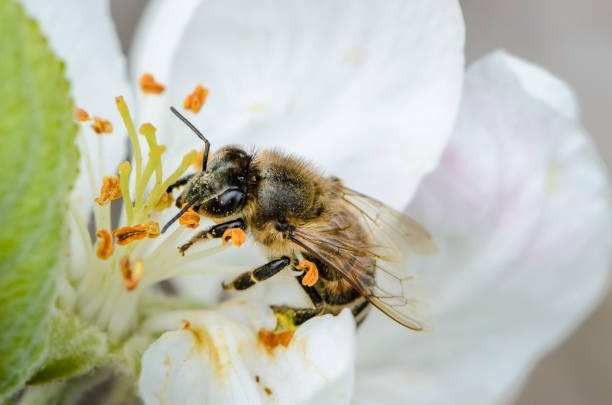
There are many forest-dwelling bee species throughout India. These bees make their nests in hollows in trees, in spaces under rocks, or in the ground. Wild plants and trees in turn benefit from pollination by forest bees.
Protecting forests means protecting these native bees. Many of the specialized bees are threatened by deforestation. Certain bees exclusively pollinate particular plants, so their conservation is very important.
Agricultural Bees
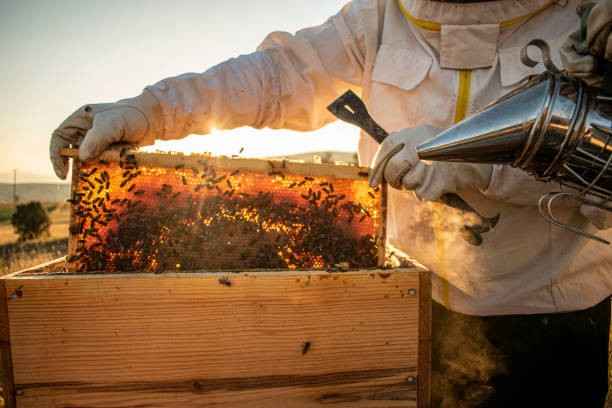
Some bees do well in farming areas. They pollinate crops like mustard, sunflower and vegetables. More farmers are seeing the benefit of bees to improve yields.
It’s good for the bees, and for the crops. Use fewer pesticides and add flower borders to attract friendly bees. Some forward-thinking farmers keep hives near their fields.
Urban Bees
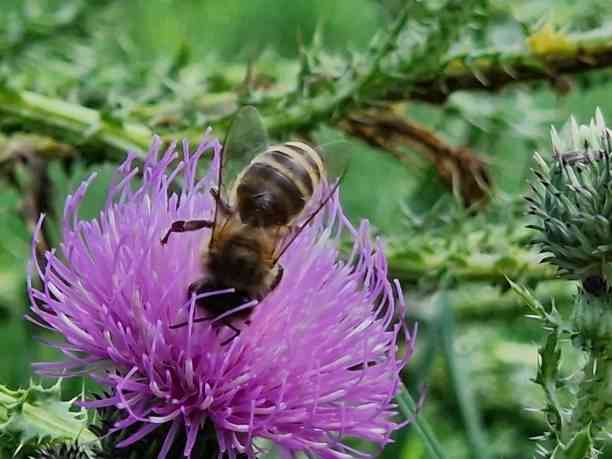
Cities can also be home to different species of bees. Urban bees visit gardens, parks and even balcony plants. These resilient bees are important pollinators of city parks and gardens.
City dwellers can help urban bees by planting bee-friendly flowers. Indigenous plants also are better than exotics. Even small gardens help local bee populations.
Threats Facing Bees Today
Bees have been in global decline, to the consternation of scientists, farmers and environmentalists. These threats in concert create unheard of issues for bees around the world. Bees in India are under the same kinds of pressures for their survival and diversity.
Bees have a hard time with modern agriculture. Intensive farming eliminates flowers and provides no nesting. The chemicals directly poison bees or compromise their immune systems. The industrial processes produce for immediate results rather than sustainable results.
Natural forests are turned into concrete jungles due to rapid urbanization. Bees lose foraging area and places to nest to sprawl. City air pollution also disrupts bee navigation, and is harmful to their health. This disconnect of urban people from nature lessens their knowledge pertaining to the importance of bees.
Bees can’t keep up with the rapid environmental shifts. Warmer temperatures change the timing of flowers and the life cycles of bees. Extreme weather destroys bee colonies and food sources. These changes occur too rapidly for bees, already stressed by other factors, to cope with.
Disease and parasites more easily infect stressed bee populations. Native bees are exposed to novel pathogens through international commerce. Infected bees cannot fight infection. All of these stressors in combination create a crisis for bee health.
What harms bees is the first step to solutions. Each of these threats involves distinct remedies and policy reforms. Bee declines can be reversed with public awareness and action. Bees are at the mercy of the decisions we make now.
Pesticide Impact
Chemical pesticides are very harmful to bees. They also weaken bees’ immune systems, and directly kill the bees. Neonicotinoid pesticides cause special damage to colonies of bees.
Farmers need to be educated about alternatives to pesticides. Chemical use is reduced through integrated pest management. Bees benefit from organic farming practices that naturally manage pest populations.
Habitat Loss
Expanding cities and farms destroy bee habitat. Bees lose nesting sites and food. Monoculture farming eliminates the variety of flowers that bees require.
It helps to create bee corridors that connect wild areas. Leaving some land wild is good for native bees. Local bee populations are supported by every tiny plot of flowers.
Climate Change Effects
Shifting weather affects the life cycles of bees. Unseasonal rains and extreme temperatures stress bee colonies. Not all the flowers bloom simultaneously, which perplexes bee foraging activities.
The knowledge of traditional beekeeping aids the process of adaptation to this change. Moving hives seasonally, and providing water sources, helps bees cope. Work to identify bee strains resistant to climate change also continues.
Frequently Asked Questions About Bees
Q1. How many types of bees are there in India?
India has over 700 species of bees. Four major honeybeespecies and hundreds of solitary bees. The Western Ghats and Northeast India have the highest bee diversity. Many are yet to be discovered in remote areas.
Q2. What do bees eat apart from nectar?
Bees eat nectar and pollen. Nectar gives energy through sugars. Pollen gives proteins and fats for growth. Young bees eat secretions from nurse bees. During scarcity they eat stored honey and pollen.
Q3. How long do different bees live?
Worker honeybeeslive 4-6 weeks during the active season. Winter bees live several months. Queen bees live 2-5 years with proper care. Solitary bees live 4-6 weeks as adults. Male bees have the shortest lifespan.
Q4. Can all bees make honey?
No, only honey bees and stingless bees make honey in large quantities. Bumblebees make small honey pots for emergency food. Solitary bees don’t make honey at all. They provision their nests with pollen balls for their larvae.
Q5. Why are bees disappearing?
Multiple reasons are causing bee decline. Pesticides kill bees directly and indirectly. Habitat loss removes food and nesting sites. Diseases and parasites weaken colonies. Climate change disrupts their life cycles. Combined stress kills bees.
Q6. How can I identify different types of bees?
Size helps in identifying bee types. Rock bees are the largest, and little bees are the smallest. Color patterns vary between species. Nesting habits give clues—solitary bees nest alone, social bees in colonies. Behavior like aggression also indicates species.
Q7. Are all bees aggressive?
Most bees are gentle and sting only when threatened. Rock bees are more defensive. Stingless bees can’t sting at all. Male bees don’t have stingers at all. Proper handling prevents most bee stings.
Q8. What flowers do bees like?
Bees like flowers with easy nectar access. Native wildflowers attract most bee species. Blue, purple, and yellow flowers attract bees. Single flowers work better than double flowers. Herbs like basil and coriander attract many bees.
Conclusion
The bee is the most efficient pollinating and honey-making machine in nature. Learning about the kinds of bees is good for us. From tiny stingless bees to giant rock bees, each has a role to play in our ecology.
Bee diversity in India is under threat. But with increased awareness and conservation efforts, there is hope. Indigenous knowledge, applied alongside contemporary science, offers hope for the future of bees. All of these acts of support for the bee will have an impact towards broader conservation aims.
There is more mystery to bees than we thought. These wonderful little creatures deserve our protection and respect. We can only begin to try and save the bee by first getting to know them. Ultimately, the future for bees depends on humanity today.


